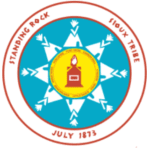
Tribe member Fred McLaughlin, general manager of the tribe-owned local wireless provider Standing Rock Telecom, fears federal and private entities covet the tribe’s wireless spectrum. Standing Rock Telecom owns 17 towers and provides monthly contracts to 1,600+ subscribers; its signals cover 3,500 miles and the service has played an important role in social media coverage of the protests, reports motherboard.
The company received eligible telecom status from the FCC in 2009, allowing the tribe to receive subsidies available to private companies. That’s when competitor West River appealed that status and temporarily blocked Standing Rock Telecom from competing for subsidies, according to McLaughlin. A spokesman for West River couldn’t comment.
Now McLaughlin worries that larger telecoms are coming in the form of the FCC’s FirstNet nationwide emergency communications network to be built out by a private contractor.
The protesters say it would cross sacred land and could leak and contaminate water used by the Standing Rock Sioux Tribe. After months of protests and a week of violent clashes, President Obama said Tuesday the federal government is considering ways to reroute the project, which is now some 75 percent complete, according to the Los Angeles Times.
“I think it’s scary that the government is essentially funding an eminent domain scenario, where the winning bidder is building over existing networks, without a fair and negotiable agreement,” McLaughlin tells motherboard. “I could very easily see a Tier 1 telecom provider saying, ‘Oh, you don’t agree to us putting something on your tower? Boom, eminent domain, we’re just [going to] build over your network now.’ That’s how this issue impacts our sovereignty.”
The federal government stopped taking applications for what is to be a high-speed, nationwide wireless broadband network June 2. FirstNet did not meet the November 1 target date for announcing its contractor selection. However CEO Mike Poth said this week at the Critical LTE Communications Forum of the International Wireless Communications Expo he’s “extremely encouraged by the progress” to date, reports Urgent Communications.
A Tier 1 provider could win, because it operates existing infrastructure which FirstNet could piggyback on, according to motherboard; the winner can also resell part of the FirstNet spectrum to other carriers because day-to-day, the majority of the spectrum would be open to commercial use unless there’s a national crisis.
A FirstNet spokesperson characterized the effort as a “public-private partnership that can be monetized.” FirstNet is creating an outreach program to engage tribal leaders; it’s also encouraging the designated single office or governmental body to include tribal nations in its state consultation process.
“We as tribal nations have never given up our airspace,” McLaughlin sums up.
Published November 4, 2016




Reader Interactions